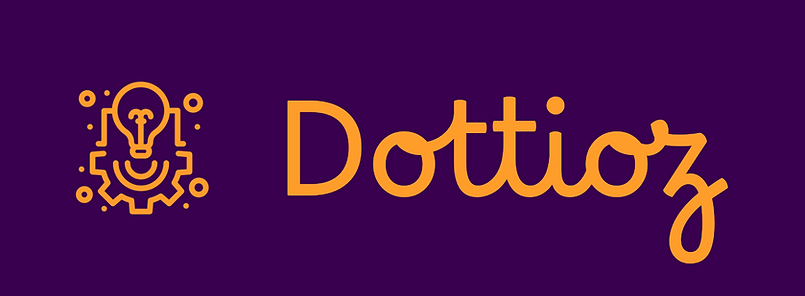Understanding How Websites Collect User Information
- Kevin White

- Jul 2
- 4 min read
In today's digital age, the way websites collect user information has become increasingly sophisticated. With the rapid growth of technology, understanding data collection practices is vital for users and companies alike. This post will explore how websites gather information from their visitors, the methods they use, and the implications for user privacy.
Data Collection Practices
Websites collect user information for various reasons, including improving user experience, personalizing content, and analyzing trends. Understanding these practices can help users make more informed decisions about their online interactions.
For example, when you visit an e-commerce site, it may track the items you view or put in your cart. This data can help the site recommend similar products or remind you of items you left behind. Similarly, social media platforms use data collection to tailor ads and content to your preferences.
However, with the conveniences of data collection come concerns about privacy and security. Users want to know how their information is being used and who has access to it. This is where privacy policies come into play, outlining how companies handle user data. If you are interested in a specific example of data practices, you can examine website data collection policies to see how various organizations approach these issues.

Why Websites Collect User Data
Websites gather user information to enhance navigation and tailor services. By analyzing this data, companies can understand visitor behavior and preferences, allowing them to optimize user experiences.
Improve User Experience: Websites can use data to streamline Navigation, making it easier for users to find what they're looking for. This can involve organizing information or creating personalized recommendations based on past purchases.
Targeted Advertising: Advertisers rely on user data to target specific demographics. By understanding users’ interests, websites can show ads that are more relevant, increasing click rates and engagement.
Analyze Trends: Organizations analyze data to identify patterns and predict future behavior. This is crucial for businesses, allowing them to stay competitive and adapt to changing market conditions.
What are the 5 Methods of Data Collection?
Data collection methods vary in effectiveness and scope. Here are five prominent techniques used by websites to gather user information:
1. Cookies
Cookies are small files stored on a user's device that track activity and preferences. They allow websites to remember users on subsequent visits, making navigation smoother.
2. Web Beacons
Web beacons, also known as pixel tags, are tiny images embedded in emails or web pages that track user behavior, such as whether an email was opened or if a webpage was visited.
3. Server Log Files
Every time a user visits a website, the server logs that activity. These logs contain information such as IP addresses, pages visited, and time spent on the site. This data helps website owners understand how users interact with their site.
4. Form Submissions
When users fill out forms to sign up for newsletters or create accounts, they provide personal information. This data is directly collected and stored, often including names, email addresses, and other identifying information.
5. Third-Party Analytics
Many websites use third-party analytics tools like Google Analytics, which collect user data on a more extensive scale. These tools offer insights on site traffic, user demographics, and behaviors across different devices.

The Role of Privacy Policies
Privacy policies are legal documents that outline how a website collects, uses, and protects user information. They serve to inform users about their rights regarding data and how their personal information will be handled.
When visiting a site, users should look for the privacy policy, typically linked in the footer. A transparent policy will outline:
The types of data collected
The purpose for collection
How the information is used
Who the data is shared with
Users’ rights regarding their data
Understanding these aspects is crucial for users to feel secure when sharing their information online.
Implications of Data Collection
While data collection can enhance user experiences, it also raises several ethical and practical considerations:
Privacy Concerns: Many users are concerned about how much personal information they have to share and the potential for misuse. Organizations must ensure transparency to build trust with their audience.
Data Security: With the increase of data breaches, protecting user data has never been more important. Companies must implement robust security measures to safeguard sensitive information.
User Consent: Obtaining user consent is essential. Users should always have the option to opt-in or out of data collection practices. This is where legislation like GDPR has come into play, requiring explicit consent from users in many regions.
Best Practices for Users
As a user, there are several steps you can take to protect your information while still enjoying the benefits of the online world:
Review Privacy Settings: Regularly check the privacy settings on websites and apps you use. Ensure you're comfortable with the level of data sharing.
Use Browser Extensions: Consider using privacy-focused browser extensions to block tracking cookies or ads that collect your information.
Be Mindful of Sharing: Think twice before providing unnecessary personal information. For instance, only fill out mandatory fields when registering for accounts.
Read Privacy Policies: Don’t skip reading the privacy policies of the sites you visit. Understanding how your data will be used can help you make informed choices.

Making Informed Choices About Your Data
In an increasingly connected world, understanding how websites collect user information is essential for maintaining privacy and security. By being aware of data collection practices and the methods employed, users can make informed decisions about their online behavior.
Furthermore, businesses must uphold ethical standards and prioritize privacy in their data collection practices. By fostering transparency and trust, they can create a better user experience while respecting people's rights to privacy.
The balance between convenience and security isn't just essential for users; it's also a significant factor for businesses aiming to thrive in the digital landscape.






Comments